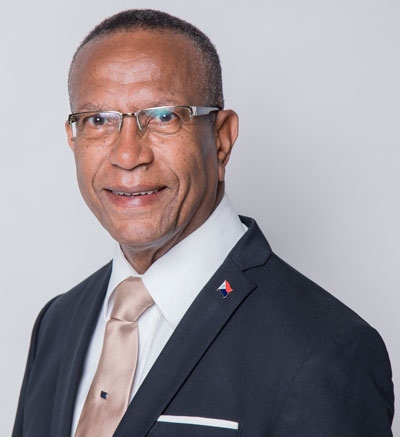 PHILIPSBURG:--- After one week of discussions with party leaders, MPs-elect, social partners and others, informateurs Mr. Jan Beaujon and Dr. Arduin will be submitting their findings to His Excellency, Governor Eugene Holiday. The first question on everybody’s mind is “which parties are going to form a coalition?” Since the people of Sint Maarten are so accustomed to government-coalitions being formed almost immediately after the election results are made known, this week became a week of speculation, anxiety and having things done differently. In my opinion, this has also been a good week for political parties because they got the opportunity to give much thought to ‘whom they could work’ with as well as to the future plans, projects, and programs they need to implement in order to move Sint Maarten forward during its recovery and reconstruction phase.
PHILIPSBURG:--- After one week of discussions with party leaders, MPs-elect, social partners and others, informateurs Mr. Jan Beaujon and Dr. Arduin will be submitting their findings to His Excellency, Governor Eugene Holiday. The first question on everybody’s mind is “which parties are going to form a coalition?” Since the people of Sint Maarten are so accustomed to government-coalitions being formed almost immediately after the election results are made known, this week became a week of speculation, anxiety and having things done differently. In my opinion, this has also been a good week for political parties because they got the opportunity to give much thought to ‘whom they could work’ with as well as to the future plans, projects, and programs they need to implement in order to move Sint Maarten forward during its recovery and reconstruction phase.
In last week’s article, I mentioned that the formation of government, after an election, consists of two very distinct yet very interrelated phases. Phase one is the formation of a parliamentary coalition in order to obtain a majority of seats in the parliament or the legislative branch of government. This phase is finalized with a government accord or agreement. Phase two is the formation of the executive branch of government. This phase is finalized with a governing program and the appointment of ministers.
After the informateurs submit their advice to the Governor, he will then need to meet with the parties that gained seats, to brief them on the findings in the report. The report would answer the fundamental question as to which political parties would be able to form “a new government that is supported by the broadest possible majority in Parliament”. Furthermore, it is expected that the informateurs will be able to indicate how parties intend to tackle the other questions listed in the assignment letter issued by the Governor, such as the reconstruction of Sint Maarten, the relationship with the Kingdom, the next hurricane season, the landfill and waste management as well as how to involve the social partners in the rebuilding of Sint Maarten.
Mind you, the report of the informateurs is only an advice. The decision to form a majority-coalition rests solely on the shoulders of the political parties and their leaders. Fortunately, this time around such a decision would not only be based on numbers but also on the research and findings of the informateurs. Subsequently, parties will enter the negotiation stage, taking into consideration their combined seats, their views on moving Sint Maarten forward as well as the ministries to be assigned to the respective coalition partners. Once parties have been able to form a majority-coalition they will sign a governing accord and then inform the Governor accordingly. The Governor will accept this governing accord and consult further with the party leaders concerning the appointment of a formateur, which will be agreed upon by the party leaders. Once the formateur has been appointed, he/she then guides the second phase of the formation of the Government which includes the preparation of the governing program and the selection of ministers to execute said program on behalf of the coalition. Unlike the parties’ manifesto, which only lists the broad intentions of the party, the governing program must be specific, detailed and prioritized. It gives the what, why, who, when, how and the how much it will cost.
SMCP indicated in its Manifesto that in order to ensure a good synchronization between the coalition partners and the Council of Ministers, the Prime Minister should be chosen from the coalition. The ministers, on the other hand, should be capable, qualified and experienced for the ministry they intend to lead.
Thus far, the informateur process has gone very well. And I hereby publicly commend the winning parties for adhering to the process. This in my opinion is a clear sign of maturity among the parties. It is my hope that the second phase of the government formation, under the guidance of the formateur, will go equally well.
In part one I wrote that, SMCP is hopeful for a national parliamentary coalition. However, if this is not possible then the broadest possible based coalition that offers a strong chance of Sint Maarten having a durable parliament and a stable government is what parties should aim for.
The people have spoken via the ballot and now it is up to the political parties, their leaders and the MPs-elect to present the country a cohesive parliament and a stable government for the next four years. This is what Sint Maarten needs more than ever if she is going to be a leader in this region.
Wycliffe Smith
Leader of the Sint Maarten Christian Party









